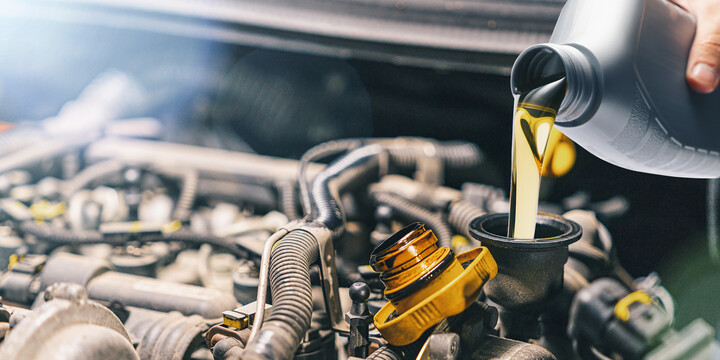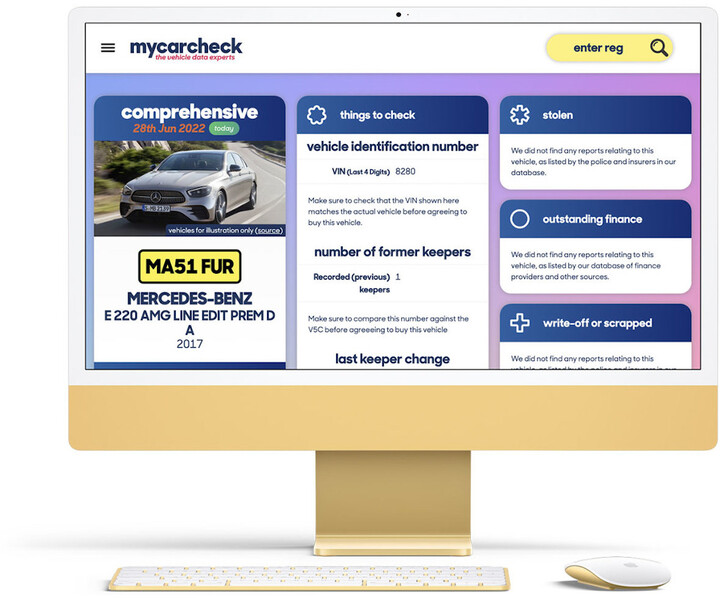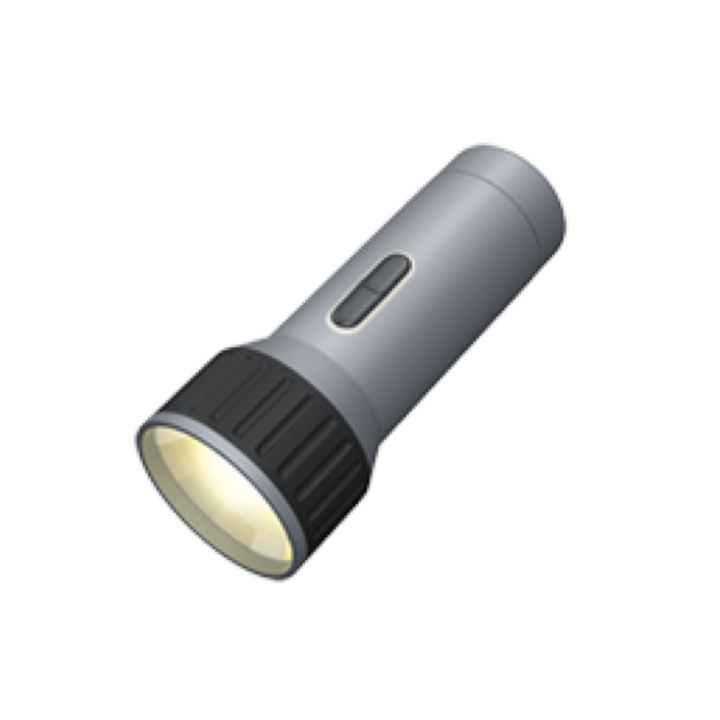
tips on how to maintain your car correctly
FREE Car History Check
See MOT history, valuations, detailed specs and more… AND upgrade to see if any vehicle has been stolen, has finance or has been written off from just £4.99
How to maintain your cars Steering
Most parts of a car withstand the rigours of daily use very well but any moving parts will require some basic checking and at the very least, an awareness of when things aren’t quite right.
For the most part, steering won’t need any specific maintenance - long gone are the days when parts needed greasing every 1,000 miles - but the steering components are more complicated than people often think. More cars are front-wheel-drive (or all-wheel-drive) than rear-wheel-drive and therefore the steering joints and bearings also have to accommodate the strains and stresses of drive shafts as well as simply changing the direction of the car.
Not only do the front wheels turn and often propel the vehicle, they must move independently of the rest of the car as part of the suspension setup. Add to this the hammering a car’s wheels receive with kerbs, potholes and speed humps and it is easy to appreciate what a car’s steering must endure.
Steering mechanisms also use a mixture of mechanical parts, hydraulics and electronics. So while they maybe generally robust and reliable there are some things to look out for.
Listen
Listen out for odd sounds, especially when turning the steering wheel. There can be a slight hum if the wheel is pulled hard to its maximum extent (‘full lock’) which is normal - it’s best to release it a tiny amount - but any thumps, bumps, squeals or clunks all indicate something isn’t as it should be.
Feel
When on a flat, dry road, check the car doesn’t pull to one side. It could be down to inconsistent tyre pressures. It could also be down to the road’s camber (the gentle slope to allow rain water to run off) so cars do sometimes pull ever-so-slightly to the left on many UK roads. But anything significant should be investigated.
Look
Open the bonnet and check the power steering fluid reservoir. This should have the correct amount of fluid in it. It is a sealed system so any fluid loss is unexpected and the cause must to be checked out.
Look at the tyre treads on the front wheels. Road cars generally have their front wheels set with toe-in, where the wheels point inwards ever-so-slightly at the front. This helps the car feel more stable in the straight-ahead position. Whether through poor set-up or an impact such as a pothole, this setting can be upset.
Significant wear on the outer edges of the tyre treads suggests too much toe-in; wear on the inner edges suggests the car has toe-out. Wear on the inner edge might also indicate too much negative camber, where the wheel leans into the car at the top. In either case, the tracking settings should be checked by a specialist and if the wear is excessive, new tyres may be needed.
Cars safety and security features
Modern car security systems are heavily integrated with the vehicle’s electronics and shouldn’t need maintenance as such. There is only one button you may need to press on the rarest of occasions and that is to de-activate the tilt alarm sensor if your car is being transported on a lorry while locked for example.
Older cars may need some additional security features either because they don’t have an alarm at all or the factory-fitted one is minimal. We suggest very visible ones such as steering wheel discs, gear lever/hand brake clamps or wheel clamps but fuel and electrical isolation systems can work well too. For particularly desirable or expensive vehicles, having a tracker fitted increases the chance of the vehicle being found following a theft and can reduce insurance premiums.
Remember any security device is merely a deterrent but there are some common sense things you can do to reduce the likelihood of vehicle theft or theft from your vehicle.
Location
Think about where you leave your car. Choose a secure car park with a barrier and pick a parking bay under the watchful eye of a CCTV camera and bright lighting. If you can, park on a driveway rather than the street. If you have a garage, use it. Insurance companies can offer reduced premiums if they know your car is locked-up safely.
Temptation
If there is nothing of interest on sight in your car, a thief may well move on to the next rather than break in on the off-chance. Either hide any items in the boot or if possible, take valuable with you. Even a coat or jacket can be of interest to a crook in case it contains a wallet or keys. Make a specific point of removing tech: sat-navs and mobile phones are thief candy. A broken-into car is one thing; losing personal positions is worse.
Discipline
Remember to close all windows, the sun roof and lock your car. Yes it’s obvious but you might find your insurance won’t cover you for any losses if you haven’t done this. And don’t leave your spare keys in the car either - insurance companies won’t pay out of your car is stolen and you left your spare keys in the glove box for example.
Decision
Your choice of car will have an impact on desirability for thieves. You might fancy that sports car but if you only have street parking available, it will be more exposed. Also look at the Thatcham website. Thatcham advises the vehicle industry and their data is used for insurance ratings. They show two ratings for each car: ease of theft from a car model and ease of theft of the car.
Your safety
Looking after your car and its contents is important but remember to look after yourself too. Here are our top tips for your own safety.
- Always have your key ready as you approach your car so you can unlock it quickly, climb inside and re-lock the doors.
- If you are carrying interesting-looking shopping bags or luggage, be extra vigilant.
- Look both around your car and inside it before you climb in. If you are concerned for any reason, carry on past your car and call for help.
- If your car allows you to unlock just the driver’s door (rather than all the doors at once), use this. It might prevent someone entering the other side.
- Re-lock your car when going to pay for fuel at a filling station.
- Don’t pick up strangers.
- While crimes may happen anywhere, try to avoid driving through the less desirable parts of town.
- Avoid making phone calls while driving and concentrate fully on your surroundings.
How to maintain your vehicle in the winter
New cars are tested in extreme conditions to ensure they operate properly throughout the year but this doesn’t mean they don’t need specific attention for winter driving. Apart from general maintenance and checks which you should do all year round, here are our top considerations for the winter season.
Washer fluid
Not only should washer fluid be topped-up (because we tend to use more when driving on dirty and salted roads) it must be of the correct concentrate so as not to freeze. Each brand will have specific instructions but concentrate can be mixed in equal parts with water for maximum effect. Some pre-mixed fluids freeze at -4 degrees centigrade and so may not be strong enough.
Tyres
Depending on where you live and the mileage you drive, it might be worth considering winter tyres. These have chunkier treads to help with snow and water dissipation but more importantly are made of a softer rubber. This remains more supple at lower temperatures and therefore improves grip when compared to standard tyres. Standard (or ‘summer’) tyres are less effective once the temperature drops below 7 degrees centigrade. Many tyre outlets offer a storage service for the tyres which aren’t on your car.
Even without winter tyres, you should ensure your existing tyres have plenty of tread and are correctly inflated.
Defrosting
It is important to defrost and de-mist all your windows and also clear any snow or ice from your car before driving. Ensuring the air conditioning is switched ON in conjunction with the heater will help because it has a dehumidifying action. Clearing the exterior of ice or snow is important because it can fly off your car and hit other road uses such as cyclists. Remember not to leave a vehicle unattended while it thaws as this leaves it open to theft.
Fuel
Vehicles sometimes become stuck in snow and journeys can take much longer in winter. So make a point of keeping your fuel level above half full if possible. While we should aim to keep emissions down by turning off an engine when we can, keeping warm with the engine running might be the difference between life and death if you are trapped in a blizzard.
Weather warnings and common sense
Listen to reports on the radio or check the weather app on your phone (although not while driving). Accidents are more frequent in poor driving conditions so if you know there is bad weather moving in and you can time your journey to avoid it, this will lower the risks.
Equipment
During the winter months it makes good sense to travel with a few extra items in your car in case of emergency. Here is our top list:
- Ice scraper. It is essential you have clear windows for driving.
- Thick, waterproof coat and warm, grippy boots. Remember all passengers should be equipped in case they need to leave a stranded vehicle in bad weather.
- Blanket. It could be quite a wait until the emergency services can reach you.
- Food and drink. You could be stuck for a while so it is important to have something to eat and drink. A flask with hot soup, tea or coffee is ideal.
- Medication. Many people take regular medication so when there is a likelihood of being delayed, it is important to carry it with you.
- Working mobile phone (with car charger). To be used to call the emergency services or check weather reports (although not while driving).
- Hi-vis jacket. Mandatory in some countries, it makes good sense if you have to step out of your vehicle.
- Torch (and spare batteries). Helpful if you need to change a wheel or for visibility and safety if walking along an unlit road.
- Snow socks. These coarse nylon bags for your tyres are good in soft snow and can be used in emergency to get you home. Note, they are not designed for prolonged driving.
- Shovel. To dig a car out of snow or distribute salt from a grit bin.
- Jump leads. Car batteries are less efficient in extremes of temperature and engines are harder to start when it is cold. Remember to refer to BOTH cars’ manuals before attempting to jump one from another: many newer cars are not suitable to jump start (due to voltage spikes which might destroy a car’s computers). The safest way is to jump start with the donor vehicle’s engine off and safer still is to use a dedicated jumper pack.
- Sunglasses. Not only will you look cool, they can help enormously when driving in low winter sun.
- A road atlas. You might have a great sat-nav but if your battery is flat, a good old-fashioned map can help you reach safety.
How to maintain your car in the summer
Summer means sunny days and long drives to exciting holiday places. Okay, it means some warmer days and often being stuck in long queues of holiday traffic.
Either way, there are some specific demands on your car because of the increased temperatures and because the average car is likely to undertake some longer journeys. Ensuring your car is in good order should help you arrive comfortably and safely so here are our top tips for summer maintenance.
Check your fluids
Your car’s engine will need to be efficiently cooled so ensure the coolant reservoir - usually under the bonnet - is filled to the correct level and with the correct proportion of coolant.
Remember to check oil levels, especially before longer drives.
Checking the reservoirs for brakes, clutch and power steering is also important.
Keep your view clear
Dry days can leave a layer of dust on the windscreen which is harder to see through, especially in bright sunshine. And summer is the time for bugs which can also obscure a driver’s view. So even if you don’t wash the whole car, do clean the windows, lights and number plates. And ensure your washer fluid is topped-up and that you use the correct amount of washer fluid. Washer fluid doesn’t just stop the water freezing in the winter, it helps clean the windscreen. Don’t use washing up liquid as this will foam too much.
Also replace worn wiper blades to allow the screen to be wiped effectively and keep a pair of sunglasses in the car to avoid being dazzled.
Stay cool
Remaining calm on warm days is safer than being hot and bothered at the wheel. So if your car has air conditioning (or full climate control) then use it. If it isn’t effective in cooling the car’s interior, visit your garage or call a specialist to get it fixed.
Check tyre pressures
Gasses expand with heat and this means the air in your car tyres does too. Over-inflated tyres can have a higher risk of punctures. So it is worth checking and adjusting the pressures to ensure they are correct. Manufacturers usually recommend slightly higher pressures if you are planning to drive your car fully laden. So if you are using it for your summer holiday with more people and luggage, you may need to add more air.
And because your are a conscientious motorist, you already check the condition and tread of your tyres on a regular basis, right?
Look after the passengers.
A calm driver and passengers is not only more pleasurable on a long journey but also safer. Keeping a bottle of water in the car can keep you hydrated and feeling more comfortable when stuck in traffic on a hot day. If you have hay fever, remember to take any medication as sneezing at the wheel can be dangerous. Some cars have pollen filters so keep windows closed and use the air conditioning.
Other differences when driving in summer
After driving your car, you may spot puddles of water beneath it. These are probably due to condensed water from your air conditioning system (although it is always wise to check).
The engine fan stays on after the ignition has been switched off. This is normal. In hotter conditions, the car will keep the fan running to ensure the engine is cooled sufficiently.
It is possible your car won’t feel quite as quick as it does in winter. This is because warmer air is less dense and therefore there will be slightly less oxygen fed into the engine.
What is AdBlue?
Vehicle manufacturers use a variety of techniques to lower diesel engine emissions. Many of us have heard of the diesel particulate filter or DPF but some cars also use an additive called AdBlue. Here’s what you need to know.
Does my car use AdBlue?
Initially, its use started in commercial vehicles and heavier, more powerful executive cars but it is now common for many diesel-powered family models to use it too. If you can’t see an obvious filler cap, you might need to check your car’s manual or with the dealership.
What is AdBlue and how does it work?
AdBlue is an additive which is fed into the exhaust system of some diesel vehicles. The process is called Selective Catalytic Reduction (SCR). It reacts with the nitrogen oxide (NOx) gas produced by the combustion process in the engine, breaking it down into harmless nitrogen and oxygen.
In fact AdBlue isn’t blue at all, it’s a clear mixture. AdBlue is actually a trade name registered by the German car manufacturers association. There are others but it is the most commonly used exhaust additive.
How do I fill up my AdBlue?
If your car uses AdBlue, it will have its own separate tank: it isn’t simply added to the regular diesel. If you are lucky, an obvious blue or black filler cap will be located next to your fuel filler for easy access. Some are located under the bonnet; others are in the boot and require the removal of the spare wheel to reach the filler.
Some cars need the use of the wheel brace (the tool for removing wheel nuts) from.gitignore under the boot floor to undo the AdBlue filler cap while others can be opened by hand.
AdBlue can be purchased from dealerships and many filling stations and car accessory shops. There are various sizes, the largest of which require a flexible hose (usually sold with the additive).
Important: You should only use the AdBlue equipment to store or refill AdBlue. The equipment should also be kept clean and free of dirt and dust.
Will it make my car more expensive to run?
The answer is yes, but not much when compared to the cost of diesel your car will use. Consumption is typically 2-4% of the diesel for cars (although larger vans and lorries may use up to 6%).
In real terms, you’ll pay around an extra £1.50 to £3 for every £100 of diesel spent (assuming £10 for a 10 litre bottle of AdBlue and £1.35 per litre of diesel) to reduce NOx levels in your car’s emissions.
What happens if I don’t top it up?
Your car should warn you with a symbol or message when the AbBlue level is low. If you run out, it won’t damage your engine but sensors will detect this. Some cars will prevent you starting the engine once it runs out. Others could reduce the engine’s performance, limiting the emissions according to legal standards.
Is it true it’s made of urine?
No, this is an urban myth. However, it does contain about a third urea which is a compound also found in urine.
Does it freeze?
Yes AdBlue freezes at around -11degC. However, the water and urea freeze and defrost at the same rate so the concentration should remain the same.














